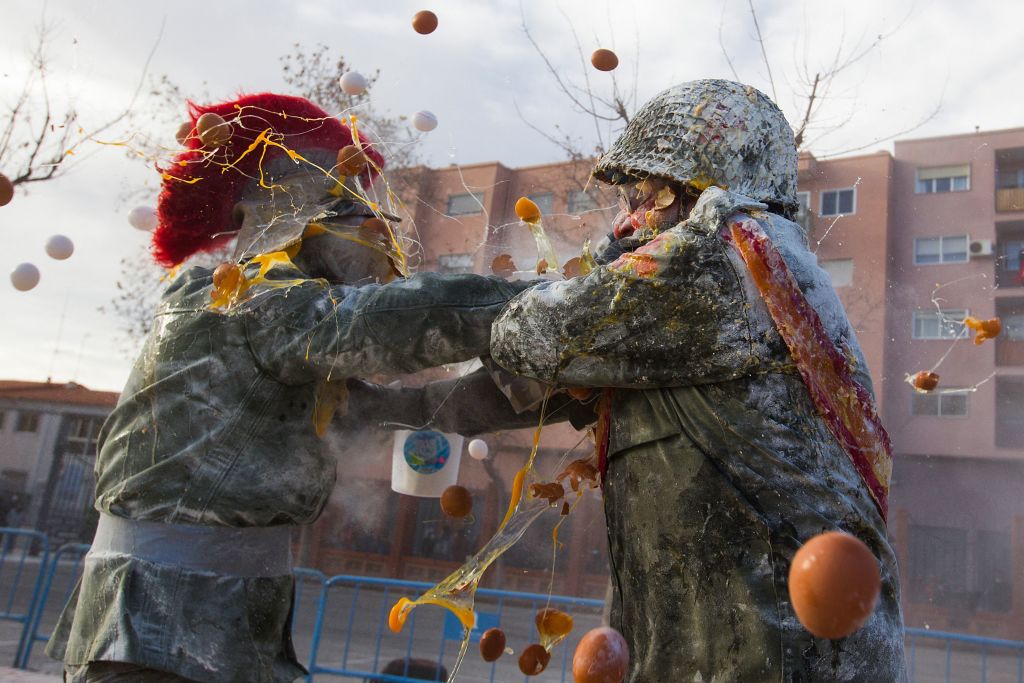On 28 December 1993, after getting off a flight from Barcelona at Madrid’s Barajas airport, 23 year-old actress Maribel Verdu was suddenly surrounded by journalists and photographers. The reason for their frantic curiosity became apparent to Verdu when she was handed that day’s copy of a Spanish newspaper, in which a full-page feature claimed she was ‘implicated’ in the separation of Princess Diana-Prince Charles. As a stunned and incredulous Verdu sat in the press room, cameras flashing in her face, the assembled hacks demanded details about her rumoured affair with the English royal, who had announced his split from Diana the year before.
Verdu actually started to look a little scared a few minutes later (the video is on YouTube), when one of her press officers informed the press pack that Charles was in the airport – presumably to publicly announce their relationship and take her back to England. ‘I love you!’ is then heard from the back of the room, as a man in a Spitting Image-style Prince Charles mask runs in with a bunch of flowers and everyone starts laughing and clapping. The joke was up, to Verdu’s visible relief: she was merely an inocente, the name given to victims of practical jokes on the Spanish version of April Fool’s Day.
The Dia de los Santos Inocentes (Day of the Holy Innocents), as it’s called, is the only day of the year on which no Spanish media outlet can be sued for running a story that would normally keep libel lawyers employed for months. Verdu’s punking has become legendary – one of the most famous and successful pieces of fake news to be published in Spain on the 28th December. And like many of Spain’s national celebrations, this one has its somewhat macabre roots in religion. It’s named after King Herod’s ‘Massacre of the Innocents’, a story told in the Gospel of Matthew. Having heard that the future King of the Jews had been born in Bethlehem, Herod is said to have ordered the execution of all male children in the town under the age of two – hence the holy innocents. But Jesus had already been taken to Egypt by Mary and Joseph, so the incredibly gruesome ‘joke’ was in fact on Herod himself.
The most common form of pranking amongst family and friends in Spain on 28 December is simply to stick a paper cut-out of a man on someone’s back without their noticing – and shouting ‘inocente, inocente!’ at them when they do. Other popular tricks and gimmicks include gluing a coin to the ground in order to watch pedestrians try to pick it up, sugar cubes that release plastic flies into cups of tea or coffee, spicy sweets sold at Christmas markets and fake hands coming off when you shake them. There are also some rather more elaborate celebrations across the country on 28 December.
The most famous is the Festa dels Enfarinats in the small Valencian town of Ibi: a 200-year-old tradition which was banned during Spain’s 1936-39 Civil War and the ensuing, 40-year dictatorship of Francisco Franco. Reinstated in 1981, six years after the dictator’s death, it starts with a battle of firecrackers, flour and eggs in the main square, resulting in a fake coup d’etat by the Enfarinats (roughly ‘the breaded ones’ or ‘the floured ones’, in Valencian dialect).
This gang of mock-rebels then rules the town for the rest of day – and failure to abide by its absurd new’ laws’ results in a fine and/or a stint in a mock-prison (the money’s given to charity). Order is restored in the evening, when the ‘opposition’ take back control of the town and celebrate with dancing, fireworks and more flour-and-egg throwing. Ibi looks truly post-apocalyptic on December 28th, its streets and residents plastered with what appears to be debris and ash from a world-ending explosion.
Flour and eggs are also enthusiastically chucked about in the Catalan town of Fraga, while in nearby Tremp a giant white paper man is hung from the church tower all day and burned amongst the street parties at night. But it’s the fake news stories that best display the creativity – and often darkness – of Spanish April Fools pranks.
One wonders how many Spaniards have looked as stunned as Maribel Verdu did back in 1993 on reading that the Archbishop of Toledo considers left-handers and redheads ‘creatures of Satan’, that the health ministry now classifies people who wear glasses as disabled, or that there’s a restaurant in Japan that serves human meat. Writing those, out, however, makes me realise that many true headlines in Spain over the last few years would have made excellent inocentes: the ex-king fleeing in disgrace to Abu Dhabi, accused of money-laundering; an entire political party put on trial for – and found guilty of – fraud,; and police being given the power to fine you for going the long way around to the supermarket, as a new virus wreaked havoc all over the world. All elaborate and very convincing pranks, no?







Comments